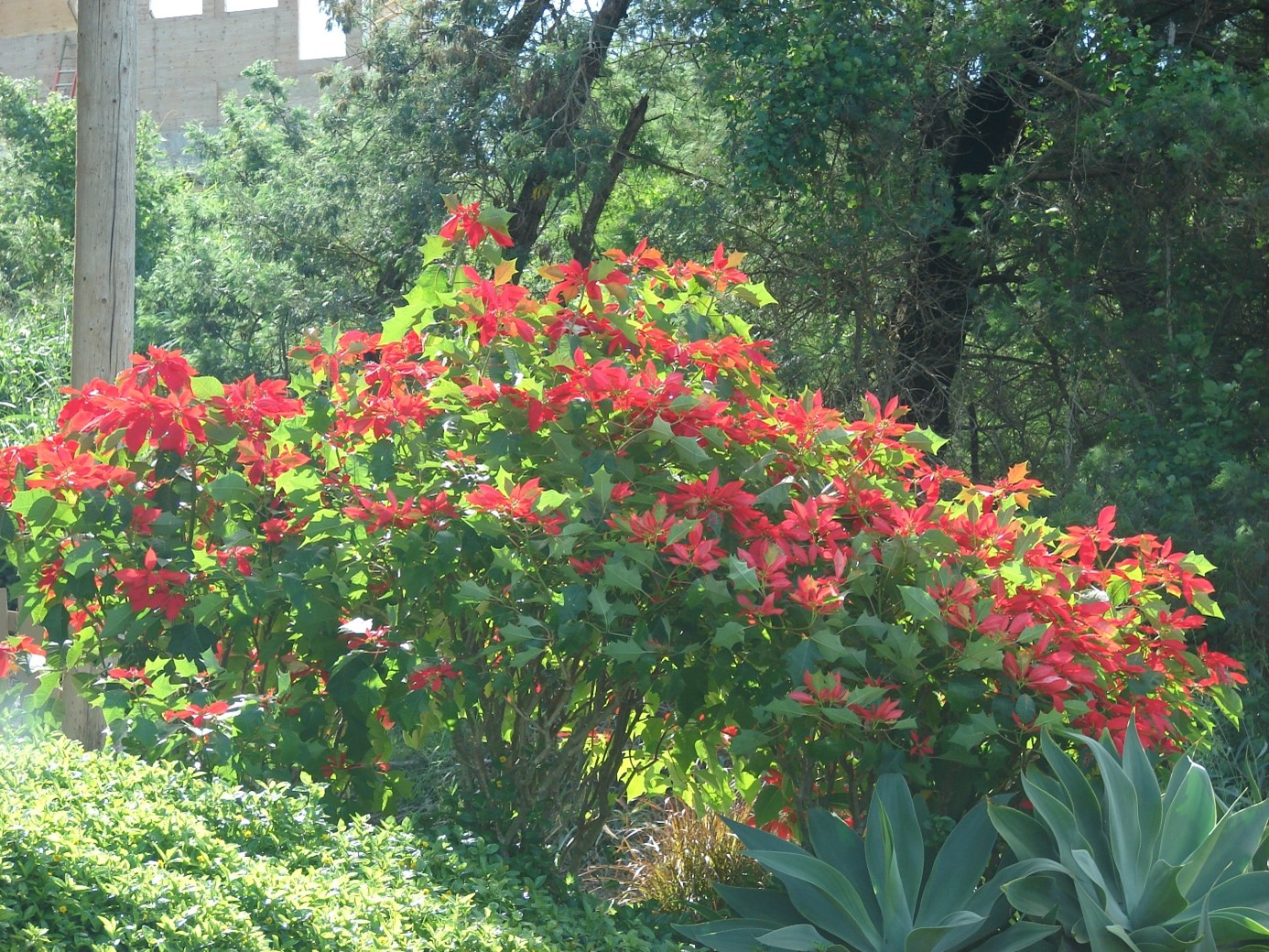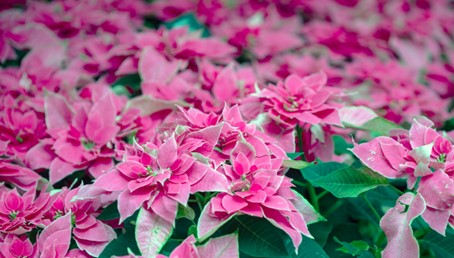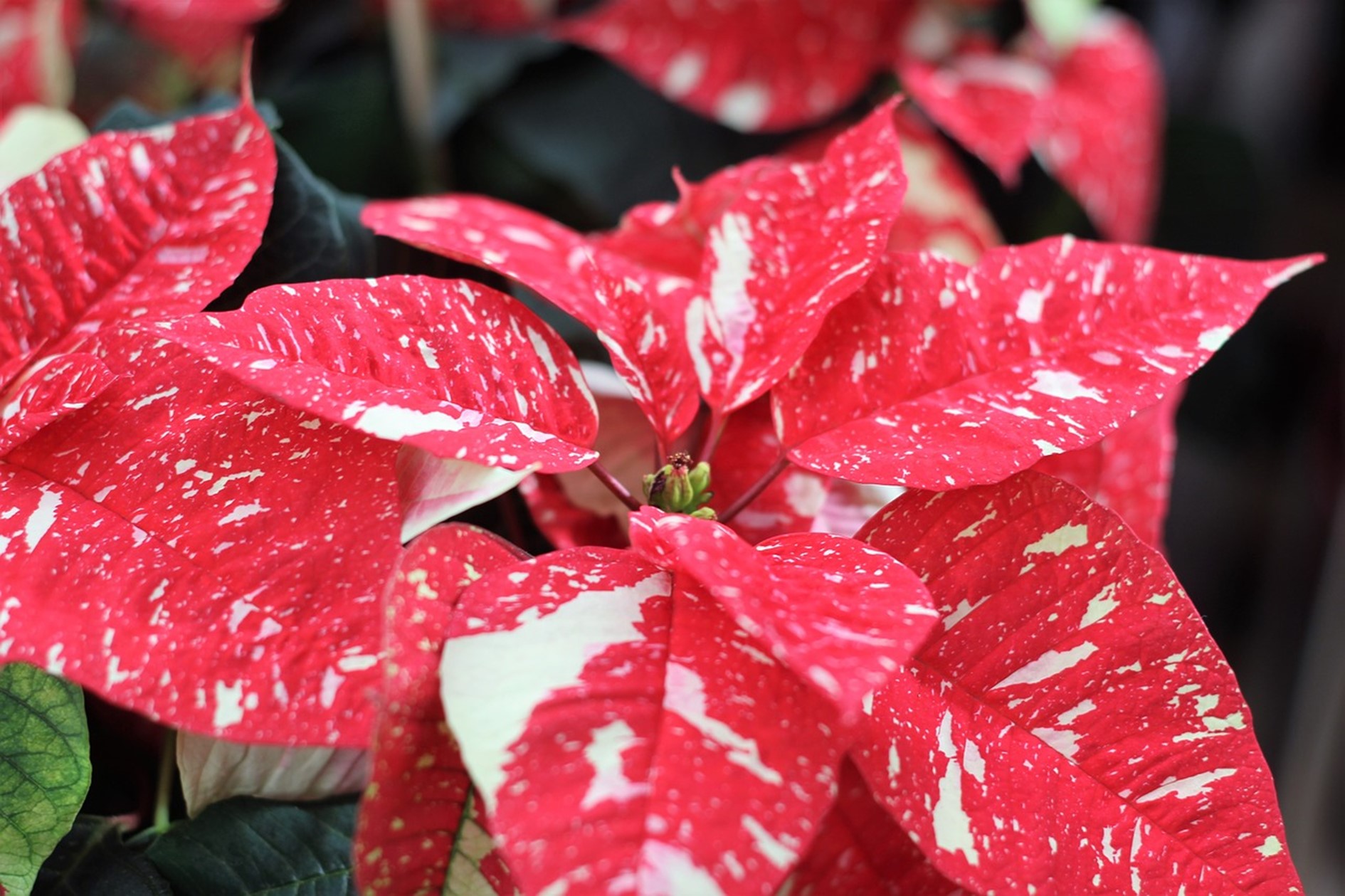The poinsettia, or Christmas star, is one of the world's best-selling houseplants, mainly in December.
Origin of the poinsettia
The poinsettia, often called the Christmas star (not to be confused with the Christmas rose, which is a hellebore), is a species of euphorbia (euphorbia pulcherrima). It originates from Mexico, where it is in fact an evergreen shrub that can reach heights of up to 6m.


The poinsettia we know forms large, colorful leaves arranged in rosettes at the end of the stems, which leads to a common mistake: the colorful stars are not the plant's flowers. They are bracts.
In the wild form of the poinsettia, these bracts are always red. However, there are cultivars with creamy-white, yellow, pink or variegated bracts. Poinsettias with blue, silver or gold leaves, on the other hand, are not naturally occurring - they are produced by color spraying.


The flowers of the poinsettia are in fact the small yellow-green formations in the middle of the leaf star, which could be mistaken for pistils.
Tip: If you want to buy a long-lasting poinsettia, make sure that the small flowers in the center of the bracts are still closed and have not been sprayed with color.

Which Garden ID pot for your Christmas star?
The Feeling or Shiny ranges are ideal. You can place the plant you've just bought in them. The different pot sizes - from 11 to 35 cm in diameter - will adapt perfectly to the size of the growing pot.
And the tall Classy pots with insert (35 cm diameter) are ideal for showcasing the drooping stems of older or larger plants.
How to care for a Christmas cactus
Fairly easy to grow, poinsettias still require a minimum of attention to ensure they thrive.
☀ Light
The poinsettia likes light, but not full sun. Flowers last much longer at temperatures between 18 and 20°C than in very hot rooms. But beware: the poinsettia is also sensitive to cold and draughts.
💧 Watering and maintenance
Water your poinsettia too little rather than too much, as euphorbia pulcherrima does not tolerate waterlogging at all. Depending on pot size and humidity, it's best to give the plant an immersion bath every seven to ten days. The potting soil may dry out a little in between before you water the poinsettia again. If the leaves turn yellow and fall off, the roots are too moist. If the poinsettia leaves hang down, which is particularly easy in full sun, it's too dry. Always fit the pot with a saucer to allow excess water to drain away.
In spring, after the flowering period - around March - the poinsettia can be kept almost completely dry for a month. During the growing season from April to autumn, it should be watered again with plenty of lukewarm water. The root ball must always be moist and must never dry out, otherwise growth will stop. In winter, just water the poinsettia a little.


🌡️ Temperature
Except in summer, keep your Christmas cactus indoors, at a temperature of between 18 and 21°C, close to a window so it can enjoy the light. Beware, however, of draughts.
☠️ Toxicity
The toxicity of poinsettias is a divisive subject. It's a fact that the poinsettia belongs to the euphorbia family, which contains a latex that can be irritating to the skin. However, it is the wild form in particular that is known for its high concentration of toxicity. Commercially available hybrids, on the other hand, are not very toxic. Nevertheless, consumption of plant parts by children or pets may cause symptoms such as skin irritation, vomiting or diarrhoea. To be on the safe side, it's best to keep the plant out of the reach of pets and small children sensitive to allergies.
🦟 Diseases, pests and parasites
Yellowing or wilting of poinsettia leaves is usually the result of cold draughts. Constantly damp soil causes root rot and gray mold. Cut off affected leaves immediately and remove them carefully so that fungal spores can't spread further. Aphids like to infest young shoots. Excessive air drying can lead to the formation of xx insects.
🗑 Potting and multiplication
You can repot the poinsettia every year in spring or summer. Use a new pot slightly larger than the old one. If the pot is too big, the poinsettia will develop many leaves, but fewer flowers and bracts. If, on the other hand, it is kept like a bonsai in a limited root space, it will remain compact and - with proper care - flower very well.
